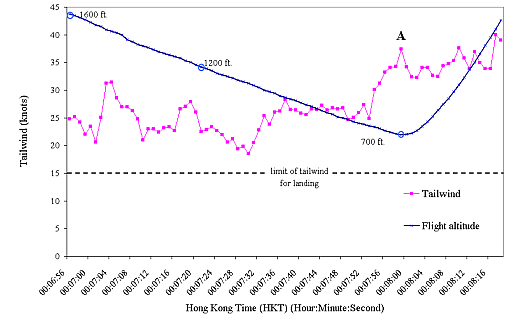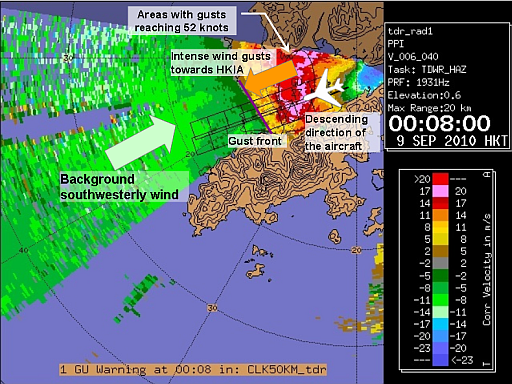Flight diversion on 9 September 2010
|
Heavy rain and active thunderstorms affected Hong Kong during the overnight of 8 September 2010, necessitating the issuance of the Amber and Red rainstorm warnings. Record-breaking number of cloud-to-ground lightning strokes were registered over Hong Kong during the hour just after midnight. The intense rainband swept across the Hong Kong International Airport (HKIA) from east to west. When the thunderstorms edged close to the HKIA, the associated downdraft affected the flight paths east of the airport. The prevailing southwesterly winds changed abruptly to gusty and strong easterlies. A flight approaching HKIA from the east encountered strong tailwind and failed to land on the north runway. It diverted to Macao eventually. |
|
Figure 1 The tailwind (purple line) and flight altitude (blue line) of an arrival flight in Hong Kong near the midnight of 8 September 2010 based on the analysis of flight data
Figure 2 TDWR velocity display at 00:08 a.m. on 9 September 2010. A gust front (purple line) over HKIA and intense wind gust (black circle) east of HKIA were detected. The white plane indicates the location of strong tailwind encountered. |

